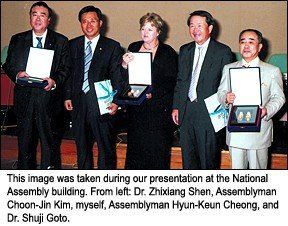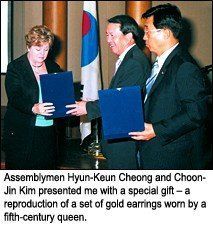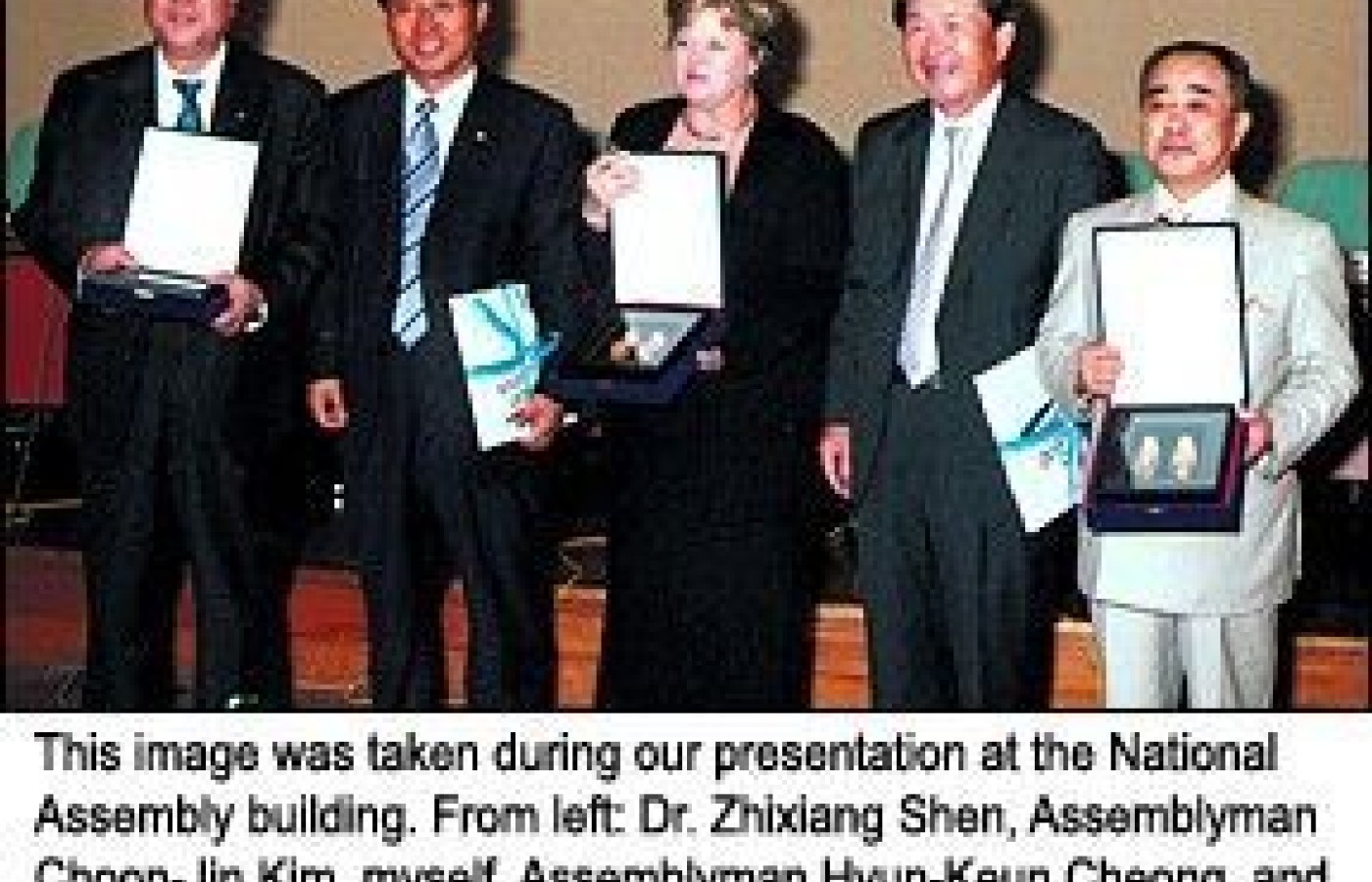Whether you accept it, avoid it or live somewhere in between, insurance coverage has become a defining issue for our profession. Patients increasingly expect to use their benefits, practitioners want to be compensated fairly for their time and expertise, and the system itself remains – at best – fragmented. The encouraging news is that coverage has expanded in meaningful ways. The challenging news is that reimbursement, across the board, remains inadequate.
A Little Bit of Seoul
Hello, faithful readers. When I began writing this article, I was thousands of miles out of the country, and looking forward to writing about a recent trip I made to South Korea. Admittedly, I was not entirely aware of the devastation Hurricane Katrina was unleashing on the residents of Louisiana, Mississippi and Alabama. Since my return to the States, I've become entirely aware of what has happened to the people of the Gulf Coast region. My heart goes out to them, and I would bedoing a grave disservice if I didn't express my condolences, offer my support, ask you to read the various articles about the hurricane (and its aftermath) contained both in this issue of Acupuncture Today and on AcupunctureToday.com, and encourage you to do what you can to help the victims of Hurricane Katrina.
We live in a world that is growing both bigger and smaller at the same time. We're learning how much we all depend and rely on each other for help and support. When a disaster of this magnitude happens, we have two choices. We can either choose to do something about it, or we can stand by and do nothing. I know what choice I'd make, and I know what choice I'd want other people to make if the same thing happened to me.
I don't mean to sound like a primadonna here, and if I have done so, I apologize. I hope you'll take what I've said to heart, though. Hurricane Katrina may have come and gone, but there are still a lot of ways you can help, and I have faith that that's what you'll do.
And now, on to South Korea.
Seoul. It's one of the largest cities in the world, with homes and hi-rise apartment buildings that house more than 10 million people. It's a city with the Coex Mall, a famous indoor shopping center that stays open until 4 a.m. each day. It's a city that borders the Han River, and the only "special city" in South Korea. It's a city in which just one church has more than 600,000 members. It's a city that plays home to Dongguk University, which has a student body of more than 25,000 and its own Oriental medicine school. It's a city with a cosmopolitan flare, an international center for business, finance, multinational corporations, and global organizations, and the home of the National Assembly, the country's seat of government.

It was here, in Seoul, that I was invited to represent the United States at a national symposium to speak about the state of the acupuncture and Oriental medicine profession in the U.S. Three countries were represented outside of South Korea. Dr. Zhixiang Shen, an official with the State Administration of Traditional Chinese Medicine, represented the People's Republic of China; Dr. Shuji Goto, president and chair of the Goto College of Medical Arts and Sciences in Tokyo, represented Japan.
The three of us were requested to write a 15-page paper explaining each of our country's legal aspects of acupuncture and Oriental medicine, the jurisdictions where acupuncture providers practice, educational requirements for acupuncturists, and how Eastern medicine fits with the Western medicine model. This information was then printed and bound into a book, which was distributed at the symposium. A shortened version, created and displayed as a PowerPoint presentation, was presented during the actual event. The whole of South Korea seems to be electronically driven.
In South Korea, providers of Oriental medicine are well respected and regulated through a licensure process, while acupuncturists are not recognized, regulated or licensed (although they want to be). There has been a long history of animosity between acupuncturists and Oriental medicine doctors. The acupuncturists, who are members of acupuncture and moxibustion societies, have worked tirelessly for this cause. At this point in time, representatives of the National Assembly are helping to bring this issue before the government. These members wanted to know the status of licensed acupuncturists in other countries, which is why Drs. Shen, Goto and I were invited to the symposium.
The event was held in the chambers of the National Assembly building. We spoke, through interpreters, in front of live television cameras, and were part of a segment on the evening news.

We were entertained in the private dining room of the National Assembly for both breakfast and lunch. An extensive tour of the government buildings was also on the agenda. On the walls of the National Assembly building was a complete pictorial history of South Korea. It was extremely interesting to see and recognize former American presidents and leaders throughout Korean history.
The event was just the beginning for many subsequent happenings that transpired during the week. Jeannie Kang, a licensed acupuncturist from Beverly Hills, graciously accompanied me on the trip. She speaks both English and Korean, and helped to make the trip a great success. Thank you, Jeannie, for all your help.
A second highlight of the trip was our visit to Dongguk University International Hospital, located just north of Seoul. This is a magnificent glass and marble building, fully equipped with state-of-the-art materials and equipment. The facility is a 1,000-bed hospital that fully integrates Eastern and Western medicine protocols. Both Eastern- and Western-trained doctors know and understand the other systems of medicine, have respect for each system's strengths, and work together for the health of their patients. The patient records at the hospital are all computerized, and contain both the Eastern and Western diagnoses.
Later on, we visited the city's herbal medicine district, where herbs are sold by the pound and cooked into teas by the gallon. We saw offices of dozens of practitioners, and hundreds of books about Oriental medicine, which were written only in Korean. I began to realize that there is a considerable depth of study and knowledge contained in these books, and wondered why so little of this knowledge is available in the United States. I finally asked the Oriental medicine director of the hospital why so many books had not been translated into other languages. He quickly replied, "After the war, there was no money to translate books. Now, the pharmaceutical companies are paying to translate Western medicine books, but do not pay for the translation of the Oriental medicine books." It was like discovering a national treasure that no one else knows about.
In a way, discovering those books was like a metaphor for the entire trip. The knowledge of an entire country is there, just waiting to be translated for acupuncture practitioners in the United States to utilize. The practitioners in South Korea want an opportunity to share their knowledge and information. All we have to do is find a way to utilize that opportunity. If we can do that, it will be a tremendous benefit to patients and practitioners in both of our countries.
Sharing knowledge and information. Exchanging ideas. Working together. Putting aside your differences. That's what this trip was all about. It's the right thing to do. It's what we should do. And it's what we all need to do more of.



